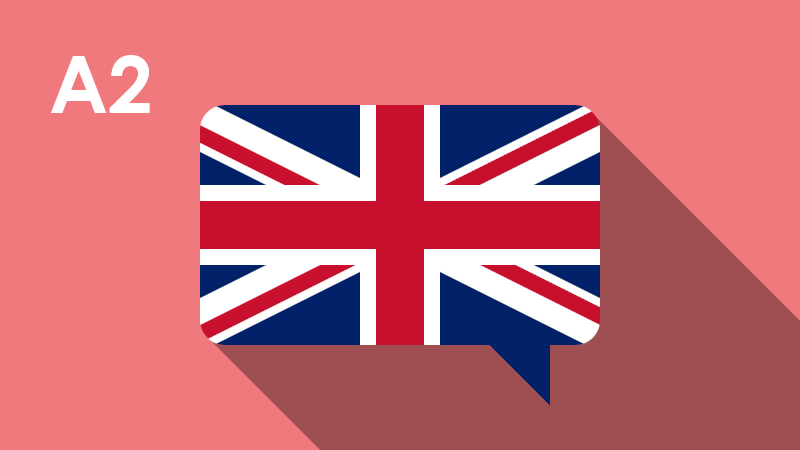- Unit 1
-
What a mess! There was a party
-
Aims: to introduce structures and vocabulary through a series of interactive exercises such as word/sentence-picture association listening comprehension with short realistic dialogues and student-led listening practice with the vocabulary items. Activities include the association of sentences and words with corresponding pictures listening to a film and answering comprehension questions. The new vocabulary focuses on parts of the house furniture and months of the year.
-
There was an armchair
-
Aims: to study and practice grammar and expressions. Structures and functions presented are: ‘there was’ and ‘there were’. The practical vocabulary extends and revises the themes of house and home. Activities include: the association of sentences and words with corresponding pictures gap-fill activities student-led listening rewriting sentences and pronunciation practice with listen and repeat exercises.
-
Were you at work this morning?
-
Aims: to study and practice grammar and expressions. Structures and functions presented are: the past simple form of the verb ‘To Be’ and relevant time expressions: now yesterday last week night etc. Other structures presented include: ‘there was’ and ‘there were’ an extension of adjectives ‘How much?’ and ‘How many?’ The practical vocabulary extends and revises the themes of house home and months. Activities include: the association of sentences and words with corresponding pictures gap-fill activities student-led listening rewriting sentences and pronunciation practice with listen and repeat exercises.
-
A flat to rent
-
Aims: to consolidate the grammar vocabulary and structures covered in the lessons through a series of interactive activities. The structures and functions reviewed are: the past simple of the verb ‘To Be’ time expressions: now yesterday last week night etc ‘there was’ and ‘there were’ adjectives ‘How much?’ ‘How many?’ and interrogative pronouns. The vocabulary continues with the topic of house home and months of the year. Activities in this lesson include: listening comprehension to choose the right option or word listen and write choose the sentence which means the same listening to fill in the gaps and dubbing the film.
-
Test exercises
-
In the last lesson of this unit students find a variety of exercises carefully chosen to consolidate and evaluate the language skills acquired in previous lessons.
- Unit 2
-
Clothes shopping
-
Aims: to introduce structures and vocabulary through a series of interactive exercises such as word/sentence-picture association listening comprehension with short realistic dialogues and student-led listening practice with the vocabulary items. The lexical focus is on shopping vocabulary: sizes prices trying things on clothes etc. Activities are based on watching a film and comprehension tasks such as matching columns.
-
Last night
-
Aims: to introduce study and practice the grammar covered through a series of interactive exercises. The following structures and functions are covered: the affirmative form of the past simple of regular verbs too + adjective and comparison of short adjectives. The vocabulary continues the shopping theme with: sizes prices trying things on and clothes. Activities in this lesson are: association of sentences and words with corresponding pictures gap-fill activities and student-led listening.
-
The catalogue
-
Aims: to review and consolidate the grammar structures and vocabulary covered through a series of interactive exercises. Structures and functions continue with the affirmative form of the past simple tense of regular verbs and the pronunciation of –ed endings: /t/ /d/ /id/. The review also includes the comparison of short adjectives and also too + adjective. The vocabulary continues to be associated with shopping: sizes prices trying things on clothes etc. Activities in the review include: pronunciation – listen and repeat association of sentences and words with corresponding pictures listening to fill the gaps student-led listening – click on the vocabulary fill in the gaps with the correct word or option dub the film and choosing synonymous sentences.
-
Test exercises
-
In the last lesson of this unit students find a variety of exercises carefully chosen to consolidate and evaluate the language skills acquired in previous lessons.
- Unit 3
-
How was your day?
-
Aims: to introduce structures and vocabulary through a series of interactive exercises such as word/sentence-picture association listening comprehension with short realistic dialogues and student-led listening practice with the vocabulary items. The learner is presented with a number of activities such as: association of sentences and words with corresponding pictures watching a film and a following comprehension task to match the columns.
-
Better or worse
-
Aims: to introduce study and practice grammar structures and vocabulary through a series of interactive exercises. Structures and functions covered are: interrogative and negative forms of the past simple irregular verbs in the past simple expressing obligations using ‘have to’ and the comparison of long and irregular adjectives. The vocabulary in this lesson extends the learners knowledge as: seasons months and dates (ordinals) and means of transport. Activities are: student-led listening – click on the vocabulary fill in the gaps choose the correct word or option.
-
What did you do last Saturday?
-
Aims: to revise the grammar structures and vocabulary covered in the lessons through a series of interactive exercises. The structures and functions from the previous lessons are reviewed such as: interrogative and negative forms of the past simple past simple of irregular verbs expressing obligations using ‘have to’ the comparison of long and irregular adjectives and travel – to go by + transport. Vocabulary includes: seasons months and dates (ordinals) and transport. Activities focus on: pronunciation – ‘th’ (soft sounds) listen and repeat association of words and sentences with their corresponding images listening and writing – fill in the gaps choosing synonymous sentences choosing the correct word or option fill in the gaps and dub the film.
-
Test exercises
-
In the last lesson of this unit students find a variety of exercises carefully chosen to consolidate and evaluate the language skills acquired in previous lessons.
- Unit 4
-
Going back to England
-
Aims: to introduce structures and vocabulary through a series of interactive exercises such as word/sentence-picture association listening comprehension with short realistic dialogues and student-led listening practice with the vocabulary items.
-
What is he doing?
-
Aims: to introduce structures and vocabulary through a series of interactive exercises such as word/sentence-picture association listening comprehension with short realistic dialogues and student-led listening practice with the vocabulary items.
-
What’s the matter?
-
Aims: to revise practice and consolidate the grammar structures and vocabulary covered in the lessons through a series of interactive exercises such as word/sentence-picture association listening comprehension gap-filling choosing the correct word and answer etc. Structures and functions extend the learner’s ability to use all forms of the present continuous present simple for habitual actions vs. present continuous for actions at the time of speaking as well as ‘some’ and ‘any’ . The vocabulary extension continues to focus on daily routines. Activities include: association of sentences and words with corresponding pictures listening to fill the gaps student-led listening write the correct word or sentence dub the film and choosing synonymous sentences.
-
Test exercises
-
In the last lesson of this unit students find a variety of exercises carefully chosen to consolidate and evaluate the language skills acquired in previous lessons.
- Unit 5
-
The fortune teller
-
Aims: to introduce structures and vocabulary through a series of interactive exercises such as word/sentence-picture association listening comprehension with short realistic dialogues and student-led listening practice with the vocabulary items.
-
He is going to work at home
-
Aims: to introduce and practice the grammar through a series of interactive exercises such as word/sentence-picture association gap-filling activities etc. Structures and functions include: ‘going to’ + infinitive for predictions future plans or intentions and deductions from visual clues present simple for habitual actions and present continuous for temporary states. Vocabulary extension: work and leisure ordinal numbers to talk about special occasions dates and ‘get’ + married dressed etc. Activities are: association of sentences and words with corresponding pictures fill in the gaps and select the correct option.
-
What are you doing nowadays?
-
Aims: to review and consolidate the grammar structures and vocabulary through a series of interactive exercises. Structures and functions: ‘going to’ + infinitive for predictions future plans intentions and deductions from visual clues present simple for habitual actions and present continuous for temporary states. Vocabulary extension: work and leisure ordinal numbers to talk about special occasions time expressions: nowadays at the moment dates and expressions with ‘get’ ‘get’ + married dressed etc. Activities include pronunciation practice listen and repeat associating images with expressions true or false listening comprehension choosing synonymous sentences fill in the gaps to complete the sentences and dub the film.
-
At work – Additional vocabulary
-
This lesson provides students with additional materials to expand their knowledge of vocabulary on the subject of jobs and professions. Vocabulary is presented in context and there are follow-up exercises that provide extended practice.
-
Test exercises
-
In the last lesson of this unit students find a variety of exercises carefully chosen to consolidate and evaluate the language skills acquired in previous lessons.
- Unit 6
-
Returning to work
-
Aims: to revise and consolidate the contents of the block through a variety of exercises and activities. Interactive exercises include associating words with pictures listening comprehension with short realistic dialogues dubbing the film dialogue understanding by filling in the gaps etc. A comprehensive revision of all the topics covered. The structures and functions reviewed are past simple to telling a simple story ‘some’ and ‘any’ and describing a house .The vocabulary focus is on the theme of house and home. Activities include: the association of sentences and words with corresponding pictures listening to fill the gaps student-led listening reading comprehension and dub the film.
-
This outfit matches
-
Aims: to revise and consolidate the contents of the block through a variety of exercises and activities. Interactive exercises include: word/sentence-picture association pronunciation practice with listen and repeat listening comprehension to fill in the gaps etc. A comprehensive revision of the topics structures and functions covered. This lesson revises: the present continuous ‘going to’ + infinitive the comparative form of adjectives as well as the vocabulary associated with clothes. Activities include: association of sentences and words with corresponding pictures listening comprehension and gap-fill student-led listening and pronunciation as well as listen and repeat.
-
High days and holidays – Reading comprehension
-
In this lesson students read and listen to a written passage of text about some of the most important holidays in the UK (e.g.: Christmas) and how they are usually celebrated. After reading students answer a series of questions that follow a sequential order and elicit their skills on active reading. Readers are asked to peruse the passage for the general meaning particular details and logical inferences. The suggested activities comprise both multiple-choice and true/false questions an example for each is provided. By practicing active and effective reading students acquire strong cognitive skills such as attention auditory analysis sound blending sound segmenting memory processing speed and visualisation.
-
Holidays on-board – Additional vocabulary
-
This lesson provides students with additional materials to expand their knowledge of vocabulary on the subject of holidays specifically when travelling on cruise. Vocabulary is presented in context and there are follow-up exercises that provide extended practice.
-
Test exercises
-
In the last lesson of this unit students find a variety of exercises carefully chosen to consolidate and evaluate the language skills acquired in previous lessons.
- Unit 7
-
In a restaurant – Typical situation
-
A practical immersion in the language where by the student will live through a real life situation similar to one they would confront in the language in which they are learning. In this lesson the student will be introduced to new vocabulary then once the exercise has been completed they will then have an opportunity to do some practice with this same new vocabulary.
-
Chores and emotions – Dialogue
-
The student will listen to a series of questions which they can answer freely. In this lesson new vocabulary will be introduced. Once the lesson has finished the student will then be able to have some practice with this same new vocabulary.
-
Fast food – Reading
-
In this lesson students read and listen to a written passage of text about fast food restaurants and other restaurants that offer international foods in the US. After that students answer a series of questions that follow a sequential order and elicit their skills on active reading. Readers are asked to peruse the passage for the general meaning particular details and logical inferences. The suggested activities comprise multiple-choice and true/false questions an example for each is provided. By practicing active and effective reading students acquire strong cognitive skills such as attention auditory analysis sound blending sound segmenting memory processing speed and visualisation.
-
Fast food – Dictation
-
In this lesson students have to follow the dictation of a text about fast food restaurants and other restaurants that offer international foods in the US. Students practice first and foremost their listening and writing skills and within the latter a range of sub-skills from spelling to punctuation. Moreover this dictation makes students practise and enhance their vocabulary syntax grammar and when reviewing his/her work proofreading. The written passage of text has been divided into different phrases or sentences and it is listened to by the student who has to write it. Students can listen to the phrase or sentence as many times as they wish and even ask for help if needed. Once a paragraph has been completed students re-read it while listening to the audio and move on to the next paragraph.
-
Test exercises
-
In the last lesson of this unit students find a variety of exercises carefully chosen to consolidate and evaluate the language skills acquired in previous lessons.
- Course revision
- End-of-module test.
-
Final test
-
In this last lesson of the course and as a way to revise the student will come across a variety of exercises which will help consolidate and evaluate any knowledge which has been acquired throughout the duration of the course.
- Unit 1
-
Having an accident
-
Aims: to introduce and recycle vocabulary functions and grammatical structures through a series of interactive exercises such as word/sentence-picture association listening comprehension with short realistic dialogues and student-led listening practice with the vocabulary items. The structures and functions introduced include the modal verbs ‘can’ and ‘can’t’ for ability exchanging telephone numbers and addresses and the prepositions of place: over on in. The vocabulary input focuses on clothes and colours through activities such as the association of sentences and words with corresponding pictures gap-fill listening exercises listening practice through spelling and pronunciation practice with listen and repeat exercises as well as practice at writing sentences.
-
A robbery
-
Aims: to introduce and recycle vocabulary and structures as well as practicing pronunciation through a series of interactive exercises such as listening and writing activities and listening and repeating words or expressions. This lesson introduces basic telephone expressions as well as practicing ‘can’ and ‘can’t’ for ability the present simple and prepositions of place. Activities include the association of sentences and words with corresponding pictures gap-fill listening exercises spelling practice and pronunciation practice through listening and repeating.
-
Can I help you?
-
Aims: to review and consolidate vocabulary grammar and structures through a series of interactive exercises such as listening to complete the gaps student-led listening with new vocabulary items listening practice with exercises on spelling and pronunciation with listen and repeat exercises. Structures and functions include: the modal verbs ‘can’ and ‘can’t’ used for ability permission and possibility exchanging personal information such as telephone numbers and addresses the prepositions of place: over on in and all forms of the present simple. The vocabulary section focuses on clothes and basic telephone expressions. Activities in this lesson include the association of sentences and words with their corresponding pictures listening practice with gap-fill exercises student-led listening with click on the vocabulary spelling practice pronunciation practice though listening and repetition dubbing the film and choosing synonymous sentences.
-
Test exercises
-
In the last lesson of this unit students find a variety of exercises carefully chosen to consolidate and evaluate the language skills acquired in previous lessons.
- Unit 2
-
At the police station
-
Aims: to introduce and recycle vocabulary and structures through a series of interactive exercises such as word/sentence-picture association listening comprehension with short realistic dialogues and student-led listening practice with the vocabulary items. The structures and functions are focused on physical descriptions and the vocabulary section continues to focus on clothes months and years. Activities in this lesson include the association of sentences and words with their corresponding pictures and dialogue comprehension.
-
What does he look like?
-
Aims: to introduce and practice grammar and useful phrases through a series of interactive exercises such as word/sentence-picture association choosing the correct word in a set context listening and repeating etc. Structures and functions include the order of adjectives and all forms of the present simple. The vocabulary input continues the theme of clothes and physical descriptions. Activities in this lesson are the association of sentences and words with corresponding pictures gap-fill listening exercises student-led listening through clicking on the vocabulary listening practice with an exercise on spelling and pronunciation practice with the opportunity to listen to and repeat a native speaker as well as reading practice with an exercise to match questions and answers.
-
Do you know him?
-
Aims: to consolidate and review the grammar vocabulary and structures covered through a series of interactive exercises such as word/sentence-picture association listening and writing activities choosing the correct word or option completing the sentences etc. The structures and functions revised are the order of adjectives all forms of the present simple as well as talking about ages. There is a review of the clothes vocabulary and physical descriptions and revision and extension of numbers. Activities in this section include the association of sentences and words with their corresponding pictures gap-fill listening exercises student-led listening by clicking on the vocabulary practice with spelling pronunciation practice with an exercise to listen and repeat matching questions and answers dubbing the film and choosing synonymous sentences.
-
Test exercises
-
In the last lesson of this unit students find a variety of exercises carefully chosen to consolidate and evaluate the language skills acquired in previous lessons.
- Unit 3
-
Tomorrow is my birthday
-
Aims: to introduce and recycle vocabulary and structures through a series of interactive exercises such as word/sentence-picture association listening comprehension with short realistic dialogues and student-led listening practice with the vocabulary items. The activities in this lesson are the association of sentences and words with their corresponding pictures student-led listening and matching words from two columns.
-
Introducing my family
-
Aims: to introduce and practice grammar and useful phrases through a series of interactive exercises such as word/sentence-picture association listening and repeating listening and writing etc. Structures and functions covered are: adverbs of frequency all forms of the present simple with the addition of new verbs all forms of ‘have got’ and prepositions of place: on under next to in front of. The vocabulary section revises the days of the week physical descriptions as well as relationships and family. There are activities based on the association of sentences and words with their corresponding pictures and listening and repetition.
-
What’s the matter?
-
Aims: to review and consolidate grammar vocabulary and structures through a series of interactive exercises such as choosing the correct word or option completing the sentences dubbing the film etc. Structures and functions covered include adverbs of frequency all forms of the present simple including new verbs all forms of have got and prepositions of place: on under next to and in front of. The vocabulary continues to concentrate on physical descriptions relationships and family revision of the days of the week. Activities in this lesson are the association of sentences and words with corresponding pictures choosing the correct word or option in a given context dubbing the film and choosing synonymous sentences.
-
Test exercises
-
In the last lesson of this unit students find a variety of exercises carefully chosen to consolidate and evaluate the language skills acquired in previous lessons.
- Unit 4
-
The fifth annual race
-
Aims: to introduce and recycle vocabulary and structures through a series of interactive exercises such as word/sentence-picture association listening comprehension with short realistic dialogues and student-led listening practice with the vocabulary items. The vocabulary focus is on places in the town and basic directions. Activities include the association of sentences and words with corresponding pictures and dialogue comprehension.
-
How do I get there?
-
Aims: to introduce and practice grammar vocabulary and functional structures through a series of interactive exercises such as word/sentence-picture association listening and repeating listening and writing etc. The structures and functions covered in this lesson are prepositions of movement and the positive form of the imperative. The vocabulary continues the theme of places in the town and basic directions as well as introducing expressions with go: go up go down and go onto. The activities in this section are based on the association of sentences and words with corresponding pictures gap-fill listening student-led listening spelling practice pronunciation exercises using listening and repetition matching questions and answers and multiple choice.
-
Turn left!
-
Aims: to consolidate and review grammar vocabulary and structures through a series of interactive exercises such as choosing the correct word dubbing the film etc. The structures and functions covered are: prepositions and the imperative. Vocabulary: places in the town basic directions and expressions with go: go up go down and go onto. Activities include: the association of sentences and words with corresponding pictures listening to fill the gaps student-led listening by selecting the vocabulary spelling practice pronunciation practice by listening and repeating matching questions and answers dubbing the film choosing synonymous sentences and multiple choice.
-
Test exercises
-
In the last lesson of this unit students find a variety of exercises carefully chosen to consolidate and evaluate the language skills acquired in previous lessons.
- Unit 5
-
Looking after her dog
-
Aims: to introduce and recycle vocabulary and structures through a series of interactive exercises such as word/sentence-picture association listening comprehension with short realistic dialogues and student-led listening practice with the vocabulary items. The vocabulary section introduces some common expressions: ‘I suppose so’ ‘poor thing’ ‘anyone’ and ‘someone’ and the activities include the association of sentences and words with corresponding pictures listening to a dialogue and dialogue comprehension.
-
Don’t eat that!
-
Aims: to introduce study and practice grammar and structures through a series of interactive exercises such as associating sentences and words with pictures writing sentences and pronunciation practice etc. The structures and functions extend the learner’s ability to give instructions as well as introduce the language needed to express prohibition through negative imperatives. Other input includes quantifiers: ‘a few’ ‘a little’ ‘a lot of’ ‘plenty of’ any’ ‘enough’ negative agreement using ‘either’ and expressing frequency: once twice three times. The vocabulary introduced compliments these functions with the language used for giving instructions and talking about prohibitions. The activities in this lesson include the association of sentences and words with corresponding pictures student-led listening spelling practice and pronunciation drilling through listening and repetition.
-
That’s enough
-
Aims: to consolidate and review grammar vocabulary and structures covered in the previous lessons through a series of interactive exercises such as listening and writing choosing the correct word or sentence and dubbing the film. The structures and functions reviewed are: giving instructions expressing prohibition using negative imperatives quantifiers: ‘a few’ ‘a little’ ‘a lot of’ ‘plenty of’ ‘any’ ‘enough’ negative agreement using ‘either’ and expressing frequency using: once twice three times. There is a review of the vocabulary needed to give instructions and to talk about prohibitions. Activities in this section include: the association of sentences and words with corresponding pictures listening to choose the correct option true or false listening comprehension listening to fill in the gaps choosing synonymous sentences and dubbing the film.
-
A good ‘cuppa’ – Reading comprehension
-
In this lesson students read and listen to a written passage of text about how tea and coffee are prepared in the United Kingdom and their importance in the British culture. After reading students answer a series of questions that follow a sequential order and elicit their skills on active reading. Readers are asked to peruse the passage for the general meaning particular details and logical inferences. The suggested activity focuses on matching a statement with its corresponding section an example is provided. By practicing active and effective reading students acquire strong cognitive skills such as attention auditory analysis sound blending sound segmenting memory processing speed and visualisation.
-
Test exercises
-
In the last lesson of this unit students find a variety of exercises carefully chosen to consolidate and evaluate the language skills acquired in previous lessons.
- Unit 6
-
What’s her flight number?
-
Aims: to revise the contents of the block through a variety of exercises and activities. Interactive exercises include dubbing the film dialogue comprehension making sentences and filling in the gaps. This lesson provides a comprehensive revision of the topics structures and functions covered in the past lessons such as:’ have got’ talking about the family directions places in a town and asking for more information. The vocabulary reviewed includes: physical descriptions family and relations. The activities include: watching and dubbing a film listening comprehension – choosing the correct option forming sentences and filling in the gaps.
-
There’s plenty of work!
-
Aims: to revise the contents of the block through a variety of exercises and activities. Interactive exercises include: choosing the correct word true or false listening comprehension reading and ordering listening to fill in the gaps etc. The revision of structures and functions covers:’ have got’ talking about the family directions places in a town asking for more information possessive ‘s’ imperatives and prepositions. The vocabulary reviewed follows the same themes of physical descriptions family and relations.
-
At the airport – Additional vocabulary
-
This lesson provides students with additional materials to expand their knowledge of vocabulary on the subject of travelling specifically terms related to the airport context. Vocabulary is presented in context and there are follow-up exercises that provide extended practice.
-
Test exercises
-
In the last lesson of this unit students find a variety of exercises carefully chosen to consolidate and evaluate the language skills acquired in previous lessons.
- Unit 7
-
Animals – Specific vocabulary
-
This lesson provides students with materials to expand their knowledge of vocabulary on the subject of animals. Vocabulary is presented in context and there are follow-up exercises that provide extended practice.
-
Nature – Specific vocabulary
-
This lesson provides students with materials to expand their knowledge of vocabulary on the subject of nature. Vocabulary is presented in context and there are follow-up exercises that provide extended practice.
-
A scenic holiday – Reading comprehension
-
In this lesson students read a passage of text that describes the landscape of a coastal town and then answer a series of questions. These questions follow a sequential order and elicit students’ skills on active reading. Readers are asked to peruse the passage for the general meaning and for particular details. The suggested activities comprise true/false questions and completing sentences with the most appropriate word.
-
Checking in and out of a hotel – Typical situation
-
A practical immersion in the language where by the student will live through a real life situation similar to one they would confront in the language in which they are learning. In this lesson the student will be introduced to new vocabulary then once the exercise has been completed they will then have an opportunity to do some practice with this same new vocabulary.
-
Being social – Dialogue
-
The student will listen to a series of questions which they can answer freely. In this lesson new vocabulary will be introduced. Once the lesson has finished the student will then be able to have some practice with this same new vocabulary.
-
Las Vegas – Reading comprehension
-
In this lesson students read and listen to a written passage of text about Las Vegas one of the most famous cities in the USA and then answer a series of questions. These questions follow a sequential order and elicit students’ skills on active reading. Readers are asked to peruse the passage for the general meaning particular details and logical inferences. The suggested activities comprise 9 multiple-choice questions an example is provided. By practicing active and effective reading students acquire strong cognitive skills such as attention auditory analysis sound blending sound segmenting memory processing speed and visualisation.
-
Test exercises
-
In the last lesson of this unit students find a variety of exercises carefully chosen to consolidate and evaluate the language skills acquired in previous lessons.
- Course revision
- End-of-module test.
-
Final test
-
In this last lesson of the course and as a way to revise the student will come across a variety of exercises which will help consolidate and evaluate any knowledge which has been acquired throughout the duration of the course.









